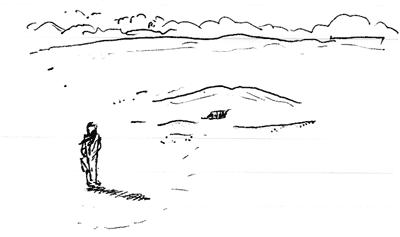
 |
 |
| Home |
| About Orkney |
| History |
| Tradition |
| Folklore |
| Placenames |
| Images |
| Downloads |
| About the Site |
| Contact |
| Links |
| Search Site |
| Awards |
| The Crantit Cairn, St Ola | |
The discovery of the cairn Without a doubt, the most talked-about archaeological discovery of 1998 was the chambered cairn at Crantit, on the southern outskirts of Kirkwall. Buried into a gently-sloping field, overlooking the valley between the beach at Scapa and the town of Kirkwall, the cairn had lain undisturbed for 5,000 years until one morning in April 1998.
On that day - as had been the case every spring for countless years - a ploughman entered, ready to begin work. But there was one difference. On this occasion he decided to plough the field in a different direction to normal - a seemingly insignificant decision that led to the discovery of what was hailed as one of "the greatest archaeological finds of recent years". While ploughing, the tractor disturbed the roof of the tomb, dislodging a roofing slab. The slab fell to reveal a hole and daylight streamed into the underground chamber for the first time in millennia. At first it was thought that the tractor had simply uncovered a burial kist - a number of similar kists had been found in a neighbouring field in the early 1900s. But closer investigation revealed otherwise. Before long it was clear that yet another Orcadian chambered cairn had been unearthed. But this one was the first in recent years, and certainly the first that had not been disturbed since the day it was sealed. The archaeologists were ecstatic. Despite the quantity of cairns scattered throughout Orkney, the new discovery raised hopes that the Crantit cairn would contain the undisturbed remains of early Orcadians. Early hopes were for untainted DNA samples, skeletal remains and perhaps even fingerprints or footprints. So, with this in mind, the cairn was carefully sealed again to prevent contamination until a complete archaeological excavation could be made. |
The name "Crantit" is thought to derive from the Old Norse "topt" - a word that refers to an abandoned house site. Neolithic cairns were frequently used over and over again, but the entrance to the Crantit cairn was heavily blocked up, both inside and out, suggesting reuse was not wanted. Crantit is strangely different from other chambered cairns in Orkney. It is built into the hillside and is practically invisible from above ground. Other Orkney cairns were built generally built as prominent mounds on hillsides or on flat ground. |
